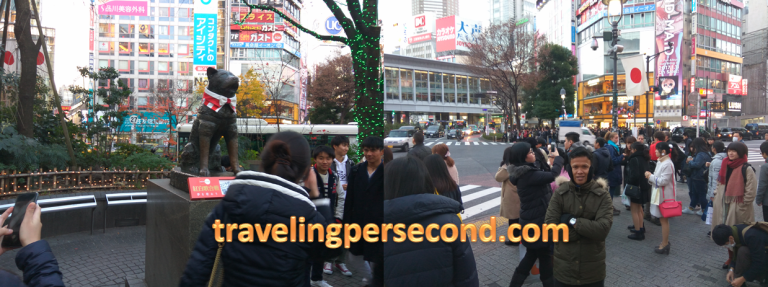
A little past two in the afternoon. I started leaving Meiji Jingū via Harajuku Station. I retraced Yamanote Line, turning south through Shinagawa District, then back to north. It covered a distance of fifteen kilometers and costed 200 Yen.
I arrived at Tokyo Station a little past three-thirty in the afternoon and was dropped off at platform number four near Marunouchi North Exit. Maranuochi itself is a business district located in west of Tokyo Station.
I continued down an underground passage and kept looking for directions to get out at exit gate located closest to JR Expressway Bus Stop. Since morning, I have decided to use bus to movimg from downtown to Narita International Airport.
Once down the stairs then I was faced with a long corridor. Right on the wall in front of the last step was a wide yellow signboard. The sign directed me to exit at Yaesu South Exit. That was the closest exit from the JR Expressway Bus Stop. Do you know about Yaesu?….In the opposite direction of Maranuochi then Yaeshu is an area located at east of Tokyo Station.





The commercial side of this station is so dominant. Along the underground passage, the station sell locker facilities to passengers. These storage facilities are known as Coin Lockers. This locker type has a rental price which varies from 600 to 1,000 Yen per day.
Along the corridors of Tokyo Station was so crowded. I kept stepping and starting to get disoriented. Unknowingly, I have arrived at Shinkansen Transfer North Gate. Until finally a station staff helped to direct me to the nearest exit. For his services, I finally managed to get out at Yaesu Central Exit.

The time lag for my flight schedule was still long. I also didn’t want to be at the airport too long. So I decided to take a seat in the courtyard of Tokyo Station. I continued to observe the activities of Tokyo residents who seemed very busy. While enjoying the busyness, I consistently opened the skin of guazi and chewed it seed by seed. And because I couldn’t find a trash can, I threw the peel of guazi on the roots of ornamental plants. I didn’t think that an officer to notice my bad behavior. I responded quickly, before he came to me, I showed him the half-filled guazi packaging. Miraculously, he just smiled and nodded. In fact, if he reprimanded me, then I was ready to take that organic trash again.
Guazi skin problem is over….
I got up from my seat and headed for JR Expressway Bus Stop. Arriving at the location, I immediately entered a long queue at the number seven bus platform. Exactly at four o’clock in the afternoon, I boarded JR Bus Kanto which was typical white with blue color.
I handed over 1,000 Yen to the driver, who was very well-groomed and in a tie. After he gave me a receipt, I took the back seat.


I was getting ready to head to Narita International Airport Terminal 1.





































